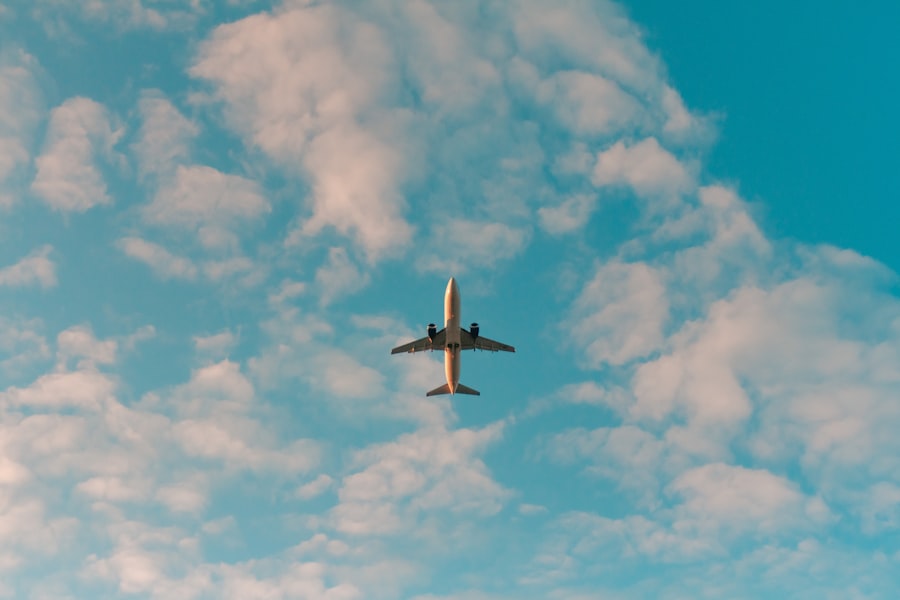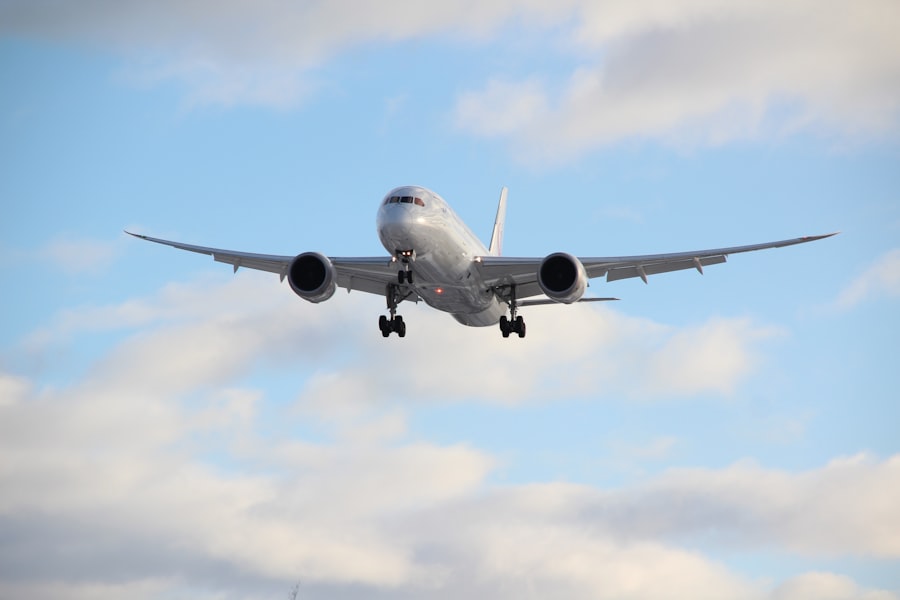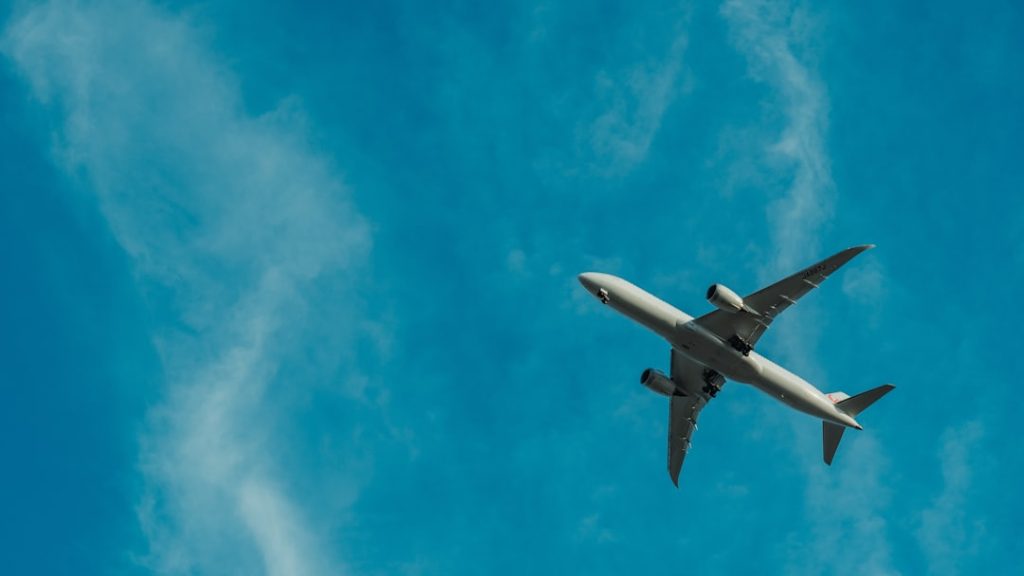Before embarking on a journey by air, the pre-flight preparation phase is crucial for ensuring a smooth travel experience. This stage begins long before you arrive at the airport, often starting with the selection of your flight. Factors such as departure times, layovers, and airline reputation can significantly influence your travel experience.
Researching the airline’s policies on baggage, in-flight services, and cancellation procedures can save you from unexpected inconveniences. Additionally, booking your flight well in advance can often yield better prices and more options, allowing you to choose a seat that best suits your preferences. Once your flight is booked, the next step involves preparing your travel documents.
This includes ensuring that your passport is valid for international flights, checking visa requirements for your destination, and having any necessary health documentation, such as vaccination records. It’s also wise to familiarize yourself with the airport layout and security procedures. Many airports provide maps and guides online, which can help you navigate through check-in, security checks, and boarding gates efficiently.
Packing your bags with care is equally important; adhering to the airline’s baggage restrictions can prevent last-minute hassles at the airport.
Key Takeaways
- Pre-flight Preparation: Check-in online to save time at the airport and ensure you have all necessary travel documents.
- Boarding and Seating: Arrive early to avoid rushing and ensure you have enough time to find your seat and stow your carry-on luggage.
- Safety Briefing and Emergency Procedures: Pay attention to the safety briefing and familiarize yourself with the nearest emergency exits and procedures.
- Turbulence and Airsickness: Stay calm and follow the crew’s instructions during turbulence, and consider taking motion sickness medication if you are prone to airsickness.
- Carry-on Items and Personal Belongings: Pack essential items in your carry-on and keep personal belongings organized to avoid clutter and make security checks easier.
- Seatbelt and Movement During Flight: Keep your seatbelt fastened when seated and follow the crew’s instructions regarding movement in the cabin.
- Airplane Etiquette and Consideration for Others: Be mindful of your noise level and personal space, and considerate of other passengers’ comfort.
- Arrival and Disembarkation: Wait for your row to be called before standing up and gathering your belongings to disembark in an orderly manner.
Boarding and Seating:
The boarding process is often a microcosm of the entire flying experience, filled with anticipation and sometimes anxiety. Airlines typically board passengers in groups or zones to streamline the process. Understanding your boarding group can help you avoid unnecessary delays and ensure that you have ample time to stow your carry-on luggage in the overhead compartments or under the seat in front of you.
It’s advisable to be at the gate well before your boarding time to avoid any last-minute rush. Observing the boarding announcements and being attentive to the instructions from airline staff can facilitate a smoother boarding experience. Once on board, finding your seat can be a straightforward task if you are prepared.
Most airlines provide a seat map during the booking process, allowing you to select a seat that meets your needs—whether you prefer an aisle seat for easy access to the restroom or a window seat for scenic views. Upon reaching your designated seat, it’s courteous to allow fellow passengers to pass if they are seated in your row. As you settle in, take a moment to familiarize yourself with the seat’s features, such as reclining mechanisms and safety equipment stored in the seat pocket in front of you.
This initial adjustment period sets the tone for your flight experience.
Safety Briefing and Emergency Procedures:

Once all passengers are seated and the cabin crew has completed their pre-flight checks, the safety briefing begins. This briefing is a critical component of air travel, designed to inform passengers about safety protocols and emergency procedures. Flight attendants typically demonstrate how to use seat belts, oxygen masks, and life vests while also pointing out emergency exits.
It’s essential to pay close attention during this briefing, as it provides vital information that could be life-saving in an emergency situation. In addition to the verbal instructions, many airlines now utilize video presentations to convey safety information more engagingly. These videos often include animations or real-life scenarios that illustrate what to do in various emergencies.
Familiarizing yourself with these procedures can significantly enhance your confidence during the flight. Moreover, reviewing the safety card located in the seat pocket can provide additional insights into emergency protocols specific to that aircraft model. Understanding these procedures not only prepares you for potential emergencies but also fosters a sense of responsibility towards fellow passengers.
Turbulence and Airsickness:
| Category | Metrics |
|---|---|
| Turbulence | Intensity (light, moderate, severe) |
| Airsickness | Number of passengers affected |
| Turbulence | Duration (in minutes) |
| Airsickness | Incidents reported |
Turbulence is an inevitable aspect of flying that can cause discomfort for many passengers. It occurs when an aircraft encounters irregular air currents, leading to sudden changes in altitude or direction. While turbulence can be unsettling, it is generally not dangerous; pilots are trained to handle these situations effectively.
Modern aircraft are designed to withstand significant turbulence, and pilots often receive real-time updates about weather conditions that may lead to bumpy rides. Passengers are encouraged to remain calm during turbulence and trust in the expertise of the flight crew. For those prone to airsickness, there are several strategies to mitigate discomfort during turbulent flights.
One effective method is to choose a seat over the wings, where the aircraft experiences less motion compared to other areas. Additionally, staying hydrated and avoiding heavy meals before flying can help reduce nausea. Many travelers find relief through over-the-counter medications or natural remedies such as ginger or acupressure wristbands.
If you begin to feel unwell during a flight, it’s advisable to inform a flight attendant who can provide assistance or offer additional resources.
Carry-on Items and Personal Belongings:
The management of carry-on items is an essential aspect of air travel that requires careful consideration. Airlines impose specific restrictions on the size and weight of carry-on luggage, which varies by carrier. Familiarizing yourself with these guidelines before packing can prevent delays at security checkpoints and ensure compliance with airline policies.
It’s also wise to pack essential items such as medications, travel documents, and electronic devices in your carry-on bag for easy access during the flight. When it comes to personal belongings, organization is key. Utilizing packing cubes or pouches can help keep items sorted and easily retrievable during the flight.
Additionally, be mindful of security regulations regarding liquids; typically, containers must not exceed 3.4 ounces (100 milliliters) and should be placed in a clear plastic bag for screening. Once on board, stowing your carry-on luggage efficiently is crucial; placing larger bags in overhead compartments while keeping smaller items under the seat in front of you maximizes space for all passengers.
Seatbelt and Movement During Flight:

The importance of wearing a seatbelt during a flight cannot be overstated. Seatbelts are designed to keep passengers secure in their seats during takeoff, landing, and periods of turbulence. Flight attendants will often remind passengers to fasten their seatbelts when instructed by the captain or when turbulence is anticipated.
It’s advisable to keep your seatbelt fastened throughout the flight whenever seated, even if the “fasten seatbelt” sign is turned off; this precaution helps ensure safety against unexpected turbulence. While movement during a flight is generally permitted once the seatbelt sign is off, it’s essential to be considerate of fellow passengers when getting up from your seat. If you need to use the restroom or stretch your legs, wait for an appropriate moment when the aisle is clear.
Additionally, if you are seated in an aisle seat, be mindful of those seated next to you; standing up or shifting positions should be done with care to avoid bumping into others or disrupting their comfort. Maintaining awareness of your surroundings contributes to a more pleasant flying experience for everyone on board.
Airplane Etiquette and Consideration for Others:
Airplane etiquette plays a significant role in ensuring a harmonious environment during flights. Simple acts of consideration can greatly enhance the travel experience for both yourself and fellow passengers. For instance, keeping noise levels down by using headphones when listening to music or watching movies demonstrates respect for those around you who may wish to rest or enjoy their own entertainment without distraction.
Additionally, engaging in polite conversation with fellow travelers can foster camaraderie but should be approached with sensitivity; not everyone may be in the mood for social interaction. Another important aspect of airplane etiquette involves managing personal space effectively. When reclining your seat, it’s courteous to do so gradually and check behind you first to ensure that it won’t disrupt anyone’s comfort or personal space.
Similarly, when using shared armrests, consider adopting a cooperative approach by allowing others some space rather than claiming both sides as your own. These small gestures of respect can significantly contribute to a more pleasant atmosphere within the confined space of an aircraft.
Arrival and Disembarkation:
As the flight nears its conclusion, preparations for arrival begin in earnest. The cabin crew will typically provide announcements regarding landing procedures and any necessary customs information for international flights. Passengers should remain seated with their seatbelts fastened until the aircraft has come to a complete stop at the gate; this ensures safety during landing and prevents unnecessary movement within the cabin while still airborne.
Disembarkation can often feel rushed as passengers eagerly anticipate reaching their destination. However, patience is key during this process; waiting for your row to be called allows for an orderly exit from the aircraft. Once disembarked, travelers should have their belongings ready for inspection at customs if applicable and follow signs directing them toward baggage claim or connecting flights.
Being organized during this final stage of travel helps maintain efficiency within busy airport terminals and ensures that everyone can transition smoothly from air travel back into their daily lives.


